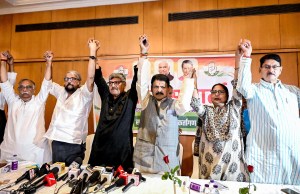Contrarian view: Growth choppy at best,no need to tighten
The Reserve Bank of India may be following a preset trajectory of monetary tightening that will take key policy rates to November 2008 levels...
The Reserve Bank of India may be following a preset trajectory of monetary tightening that will take key policy rates to November 2008 levels,but some fear this may threaten the growth targets of 8.5 per cent set by the government. The data on industrial output is not so encouraging as is made out to be,and an increase in lending rates will only retard growth,say some economists.
Industrial output during the last six months (October 2009 to March 2010),figures for which are available,grew just 4.76 per cent when annualised compared with the previous six months (March- September 2009). The economy suffers from the problem of deficient growth and not excess growth. The RBI action may serve to slow down growth, said Surjit Bhalla,managing director,Oxus Investments,a research firm.
Year-on-year growth numbers of the index of industrial production (IIP),however,tend to give an impression that growth has taken a firm footing. Monthly y-o-y IIP growth has consistently been above15 per cent since December last year. Industrial output grew 17.71 per cent in December 2009 compared with December 2008. Similarly,IIP in January was at 16.29 per cent,in February 15.07 per cent,in March 13.93 per cent and in April 17.6 per cent.
But if one looks at sequential growth data,they paint a different picture,at best described as choppy. So IIP in January 2010 grew by merely 0.18 per cent compared with December; in February it decelerated 4.15 per cent. Industrial production in March grew a remarkable 9.04 per cent,but in April it dropped 8.81 per cent showing that growth had not quite stabilised.
Nonetheless,some economists back the tight monetary policy regime embarked by RBI,although they acknowledge that rate hikes have little impact on food inflation,which is predominantly the reason why WPI-based inflation continues to hover in double digits. The RBI has taken the right set of measures. Now it is up to the banks to ensure success of these measures by increasing deposit rates and adjusting lending rates according to sectors. Banks will have to realign rates such that cash-starved sectors such as small and medium enterprises,exports get more funds, said Rupa Rege-Nitsure,chief economist,Bank of Baroda.
RBI’s action is primarily a response to the upset liquidity conditions following the sale of spectrum. Clearly there is some danger to the economy. Investment growth hasn’t picked up yet. Between 2008 and today,IIP on an average has grown at around 8 per cent,which is fine. The question is whether we are able to sustain this kind of growth or not, said Pronab Sen,former chief statistician of India,now with the Planning Commission.



- 01
- 02
- 03
- 04
- 05




























